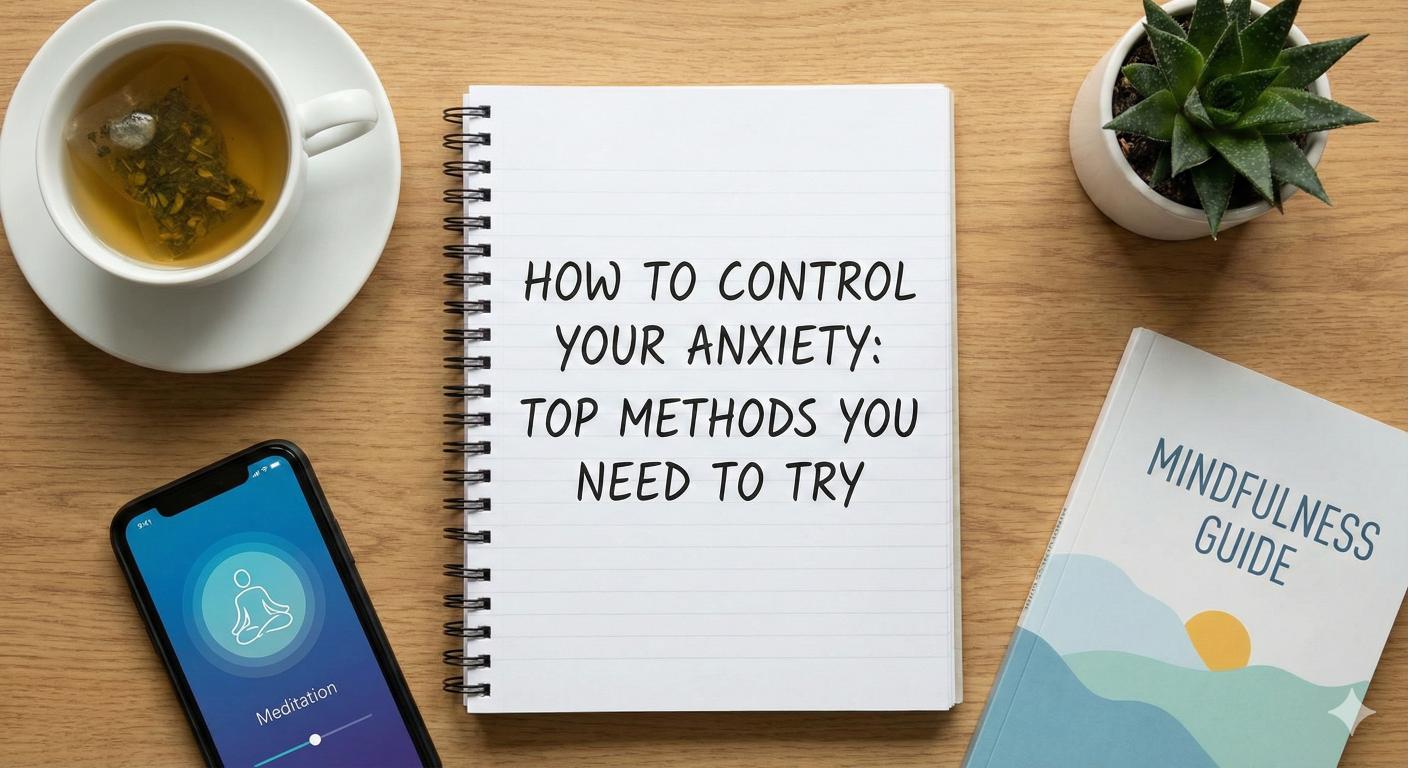Decrypting Mood Disorders and Suicide Signs
Explore mood disorders and suicide risk: recognizing warning signs can help save lives and foster understanding.

Understanding Mood Disorders
Mood disorders significantly impact individuals' emotional states, leading to prolonged periods of depression or mania. Understanding the various types and risk factors associated with these disorders can aid in recognizing the potential link to suicide risk and its warning signs.

Types of Mood Disorders
Mood disorders are classified into two primary groups: depressive disorders and bipolar disorders. Each group consists of several different types.
Type of Mood DisorderDescriptionDepressive DisordersCharacterized by persistent feelings of sadness, hopelessness, and a lack of interest in activities. Examples include major depressive disorder and persistent depressive disorder (dysthymia).Bipolar DisordersInvolves cycles of depression and periods of mania or elevated mood. The primary types include bipolar I, bipolar II, and cyclothymic disorder.
Research indicates that individuals experiencing serious mood disorders have an elevated risk of suicide, especially when compounded by substance abuse issues [1].
Risk Factors for Mood Disorders
Numerous factors can contribute to the development of mood disorders. Recognizing these risk factors may help in identifying individuals who might be at an increased risk for both mood disorders and suicide.
Risk FactorDescriptionGenetic PredispositionFamily history of mood disorders can increase risk.Environmental StressorsLife events such as trauma, loss, or chronic stress can trigger mood disorders.Substance AbuseAlcohol and drug use often exacerbate mood disorders and increase suicide risk.Psychological FactorsPre-existing mental health conditions, such as anxiety disorders, can contribute to mood disorders [2].
According to studies, individuals with mood disorders account for the majority of psychiatric diagnoses among those who die by suicide, with approximately 90% of those who die by suicide having some form of psychiatric illness [2]. Understanding these risk factors is crucial for effectively addressing mood disorders and suicide risk: recognizing warning signs.
Mood Disorders and Suicide Risk
Understanding the connections between mood disorders and the risk of suicide is vital for early intervention and prevention.
Link Between Mood Disorders and Suicide
Having a mood disorder significantly elevates an individual's risk of suicide. This risk increases substantially when the mood disorder is severe or accompanied by substance abuse, particularly with alcohol or drugs [1].
Among mood disorders, conditions like bipolar disorder are particularly notable. These disorders feature mood swings that can include manic or hypomanic episodes, as well as depressive episodes. Symptoms during these episodes may include easily distracted behavior and racing thoughts, contributing to the complexity of the individual's mental health state [1].
Statistics on Mood Disorders and Suicide
The prevalence of suicide in individuals with mood disorders is alarming. Globally, suicide is the second leading cause of death among individuals aged 15 to 29 years. Every 40 seconds, a person dies by suicide, totaling over 800,000 deaths annually [2].
Moreover, most suicides are linked to existing psychiatric conditions. Depression, substance use disorders, and psychosis rank as the most significant contributors to suicide risk. Psychological research shows that approximately 90% of individuals who die by suicide have mental disorders.
The statistics concerning mood disorders are particularly striking:
AspectDetailsLeading cause of death (age 15-29)Suicide is the second leading causeGlobal suicide rateOne person dies every 40 secondsAnnual deaths by suicideOver 800,000 individualsMental disorders in suicides90% have a mental disorderSuicides linked to mood disordersHalf to two-thirds involve mood disorders
Completed suicide remains a serious public health concern, with studies indicating that a significant proportion (about half to two-thirds) of completed suicides involve individuals suffering from mood disorders [4].
Recognizing these connections between mood disorders and suicide risk is crucial for effective prevention strategies and for aiding those in need. For more information on prevention strategies, explore our articles on lifestyle changes to manage mood disorders and coping with emotional instability.
Warning Signs of Suicide
Identifying the warning signs of suicide is a critical component in preventing tragic outcomes. Understanding these signs can help individuals who care for those struggling with mood disorders recognize when someone may need immediate help.
Recognizing Warning Signs
Warning signs of suicide may manifest in various forms. Key indicators to look for include:
For further information about managing emotional fluctuations, visit navigating mood fluctuations in daily life.
Warning SignDescriptionTalking about suicideDiscussing thoughts of wanting to dieFeeling hopelessExpressing that life is not worth livingRisky behaviorsEngaging in acts that show a lack of concern for oneselfSocial withdrawalIsolating from friends and familyEmotional instabilityRapid changes in mood and outlook
These signs should not be ignored. According to the National Institute of Mental Health, understanding these signals can lead to timely intervention.
Psychological and Behavioral Indicators
Behavioral and psychological indicators often accompany the warning signs. These factors can provide additional context about an individual's mental state:
Psychological IndicatorDescriptionHistory of mood disordersIncreased risk is associated with conditions like depressionSubstance abuseUse of alcohol or drugs can lead to impulsive actionsPrevious attemptsPast behaviors can predict future risksDeteriorating relationshipsConflict or withdrawal from loved ones could indicate distressChanges in sleepSleep issues can reflect emotional and psychological challenges
Recognizing both the cognitive and behavioral signs can deepen understanding of the individual's mental health. For strategies to manage mood impacts, visit lifestyle changes to manage mood disorders.
Awareness is vital in addressing mood disorders and suicide risk: recognizing warning signs can be the first step toward effective support and intervention.
Factors Influencing Suicide Risk
Understanding the factors that influence suicide risk is crucial in addressing mood disorders. Two significant aspects include the role of social isolation and the impact of clinical and psychopathological elements.
Role of Social Isolation
Social isolation is recognized as a major risk factor for suicide. Research indicates that it is inversely correlated with social integration. E. Durkheim highlighted the importance of this factor, noting that the lack of social connections can elevate suicidal ideation. T. Joiner's interpersonal theory of suicide further reinforces the idea that social connections are critical in preventing suicide NCBI.
Age and gender play important roles in how social isolation affects suicide risk. Individuals aged 70 and older often exhibit the highest suicide rates, while suicide ranks as the second leading cause of death among those aged 15 to 29. Social isolation presents unique challenges in these demographics, with strong family relationships serving as vital sources of support.
Age GroupSuicide RateComments15-29HighSecond leading cause of death70 and olderHighestSignificant risk factor
Impact of Clinical and Psychopathological Elements
Beyond social factors, various clinical and psychopathological elements can influence suicide risk. Mental health conditions, particularly mood disorders, are significant contributors. Research indicates that the lifetime risk of completed suicide among psychiatric patients with mood disorders is estimated to range from 5% to 6%. Individuals with bipolar disorder face a potentially higher risk than those with major depressive disorder NCBI.
Several factors can exacerbate this risk, including:
Suicidal behavior is notably prevalent among individuals with mood disorders. Up to 40% report a history of suicide attempts, with rates reaching around 50% for those with bipolar disorder. For patients diagnosed with major depressive disorder, the prevalence of suicide attempts ranges between 30% to 40% NCBI.
By understanding the interaction between social isolation and clinical factors, it becomes clear that addressing these issues is critical in recognizing warning signs associated with mood disorders and suicide risk. Further exploration into lifestyle changes to manage mood disorders and strategies for emotional resilience can provide individuals with tools for better mental health management.
Suicidal Behavior in Mood Disorders
Prevalence of Suicidal Behavior
Suicidal behavior is a significant concern among individuals with mood disorders. Research indicates that the prevalence of positive lifetime histories of suicide attempts among psychiatric patients with mood disorders ranges from 30% to 40%. This figure increases for those with bipolar disorder, with studies showing that approximately 50% report previous attempts.
The following table summarizes the prevalence rates of suicide attempts in various mood disorders:
Mood DisorderPrevalence of Suicide Attempts (%)Major Depressive Disorder (MDD)30 - 40Bipolar Disorder (BD)30 - 50 (or higher)
These statistics illustrate the alarming rates of suicidal behavior among those diagnosed with mood disorders. Understanding this prevalence is crucial in recognizing the need for effective support and intervention strategies.
Factors Contributing to Suicide Attempts
Several factors contribute to the risk of suicide attempts in individuals with mood disorders. Recognizing these factors can aid in identifying individuals who may be at risk. Key risk factors include a family history of suicide, early onset of mood disorders, the severity of depressive symptoms, and the presence of comorbid substance abuse disorders. Other concerning traits such as hopelessness, aggression, impulsivity, and young age also heighten risk.
The following table lists significant risk factors for suicide attempts among those with mood disorders:
Risk FactorDescriptionFamily History of SuicideIncreased likelihood if family members have a history of suicide.Early Onset of Mood DisorderOnset at a younger age can lead to higher risks.Severity of Depressive SymptomsMore severe symptoms correlate with increased risk.Comorbid Substance AbuseAlcohol or drug abuse can exacerbate mood disorder symptoms.Impulsivity and AggressionImpulsive behaviors and aggressive tendencies may lead to higher risks.HopelessnessFeelings of despair significantly increase risk.Young AgeYounger individuals are often at a heightened risk.
These contributing factors highlight the complexity of suicidal behavior in mood disorders, emphasizing the need for tailored approaches in prevention and treatment. For further information, readers can explore lifestyle changes to manage mood disorders and learn about the impact of the role of sleep in mood regulation.
Prevention Strategies
Multifaceted Suicide Prevention
Preventing suicide requires a multifaceted approach, as no single risk factor is strongly associated with increased suicide risk. Effective strategies must combine evidence-based methods both at the individual and population levels [7].
Programs aimed at suicide prevention should include:
Prevention StrategyDescriptionPublic Awareness CampaignsFocus on education regarding mental health.Access to ServicesEnhance availability of mental health resources.Healthcare Provider TrainingEquip GPs with skills to manage mental health issues.Community Support ProgramsStrengthen social connections and support systems.
Tailoring Strategies for Individuals
Personalizing prevention strategies is crucial in effectively addressing the needs of individuals at risk. Each person's experience with mood disorders and their associated suicide risk can vary widely. Therefore, tailored approaches should include:
An example of differential risk based on gender and mood disorder type is highlighted by the lifetime risk of completed suicide among different groups (PubMed):
Mood Disorder TypeRisk for MenRisk for WomenBipolar Disorder7.77%4.78%Unipolar Affective Disorder6.67%3.77%
Considering these variances, intervention strategies should not only adapt to individual needs but also be informed by empirical data to address specific demographics effectively. For more information on managing mood disorders effectively, you can explore topics such as lifestyle changes to manage mood disorders and mood tracking: tools and benefits for managing mood disorders.
References
[2]:
[3]:
[4]:
[5]:
[6]:
[7]:
More Resources
A team ready to start your journey.
Get in touch — today.
We are a safe space – a haven for exceptional individuals to receive discreet, personalized, in-person treatment and care.
.avif)










